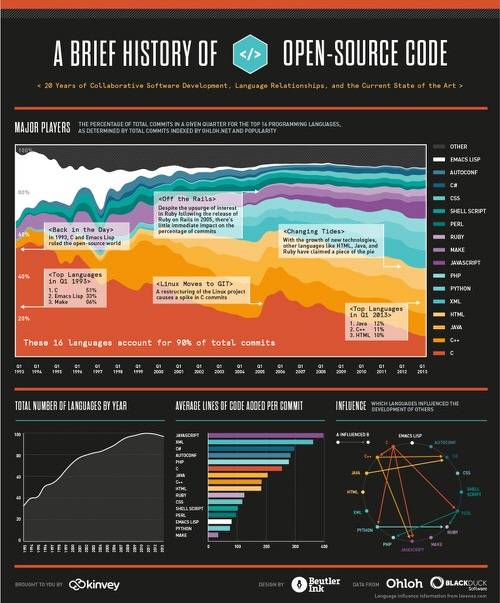
The rise in popularity of modern connected computing can be traced to the late 1980s and early 1990s. The personal computer and later the World Wide Web combined to create an unprecedented explosion in the availability of information and the ability to immediately connect to our fellow humans.
To the layman, it may seem like magic. But to the people who actually built these systems, using programming languages to manipulate how computers, servers, the Web and other services function just as they were meant to.
Most of these programming languages are open, meaning that anybody can use them and add to their functionality. But just as computing has significantly evolved in the last 20 years, so too have the programming languages that developers use to make those computers work. Nothing is static, everything is always evolving.
For instance, did you know that one of the most popular open source programming languages in 1993 was Emacs Lisp? For those of you that have never heard of an Emacs, it is a text editor very popular created by free-software guru Richard Stallman that is used among the Linux developer crowd. Because of its extensibility, a lot of programmers use it to create code, because there aren’t a lot of full-fledged integrated developer environments (IDEs) for Linux and what few there are tend to be eschewed. Emacs Lisp is a derivative of the older Lisp programming language.
The C programming language was the most popular open source code in 1993 with 51% of total commits in the first quarter that year. Make, a utility that automatically builds executable programs and libraries from source code for Unix developers, was used by 6% of developers in 1993.
In the first quarter of 2013, Java was the most used open source code with 12%. C++ registered 11% while HTML had 10%.
All of these open source programming languages would have influence on what was to come. C has influenced the evolution of languages like C++, Python, Javascript and Perl. Java helped form the foundations for C# while Python has influenced Ruby.
The evolution will continue. In 1993 there were nearly 40 open source programming languages. In 2013 there are almost 100 and new ideas are being created every day.
Check out the infographic from mobile cloud services company Kinvey charting the last 20 years of open source code. Data for the infographic was pooled from Ohloh.net and Black Duck Software.
We were able to visualize the percentage of total commits in a given quarter for the top 16 programming languages from 1993 until today. We hope you’ll find this image—a provocative pattern of dips and spikes—to be as interesting as we do. It truly shows how dynamic the world of programming is. We’ve also included a few graphs on other interesting data points: total number of languages by year, average lines of code per commit, and tracking which languages influenced the development of others.

Top image of Open Cola, an open source soft drink, courtesy Wikipedia Commons

















